You’ve probably seen it already. Instead of creating your general list of websites, all you need is “AI tools for small businesses,” and ChatGPT will spit out your answer. However, if your brand is not among the responses from AI, then you are non-existent.
This is the future of search. What was once a battle around the first page of Google is now about shaping AI-brewed answers. That is the essence of ChatGPT SEO being ahead of those AI results with your brand before your competition.
The problem? Unfortunately, a lot of marketers are still playing the old SEO game, stuffing keywords and building backlinks. However, AI engines like ChatGPT and Google SGE fancy a structured, authoritative context ecosystem.
If you are not in that, then you do not exist. The good news? Very few brands are doing this right now.
This guide will show you how to Build Topical Authority and Get Your Brand Recommended by AI with an AI Content Clustering Strategy. And I will share a real SEO Content Expansion Framework that helped to increase traffic by over 300% without any loopholes.
Let’s dive right in, and you can begin to master Generative Engine Optimization (GEO) and keep your brand visible on AI-powered search.
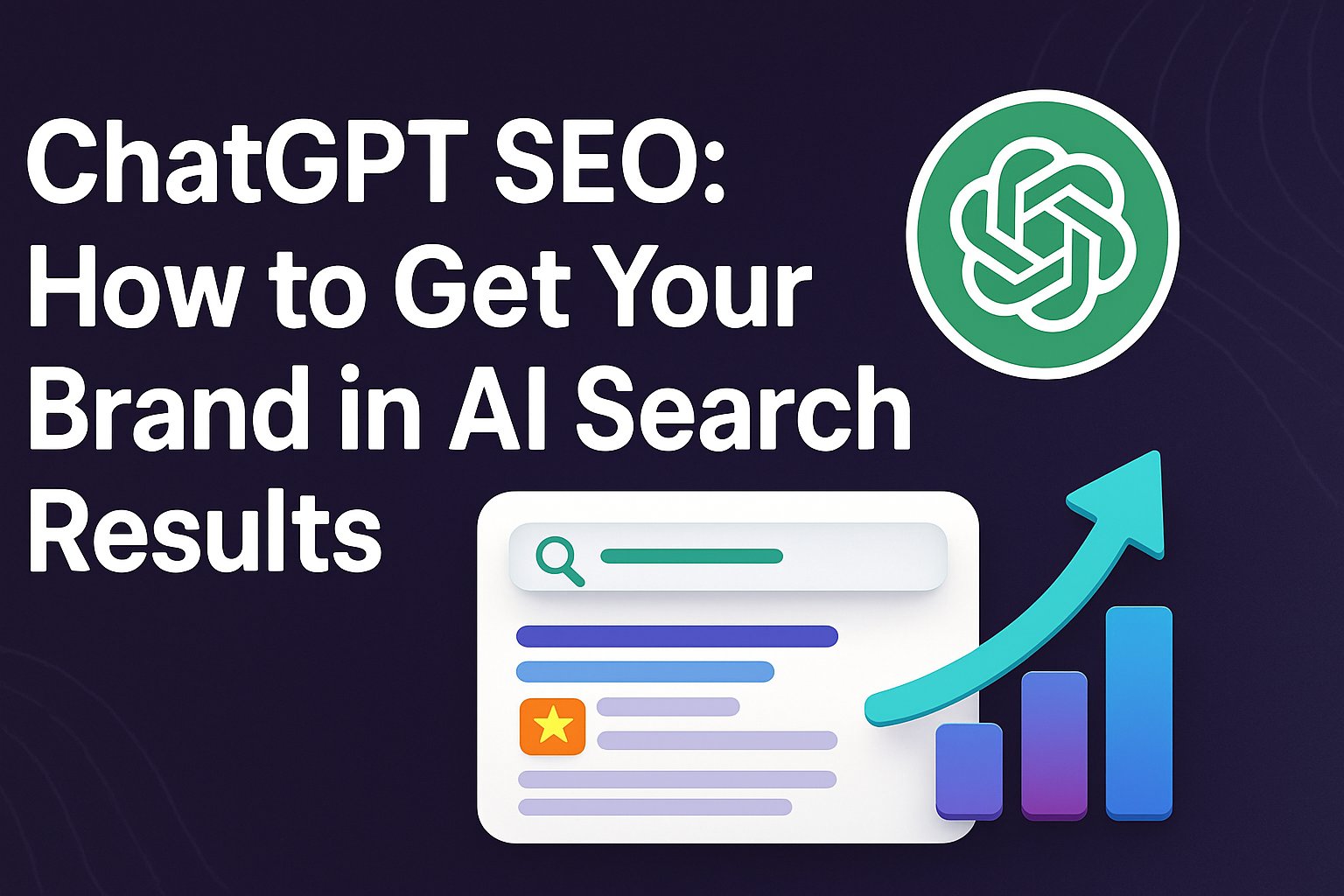
What is ChatGPT SEO?
ChatGPT SEO is the process of making your content more easily and frequently recommended by AI-based platforms like Google SGE, Bing Copilot, and Chatbot GPT to increase the chance of your brand being suggested in comparison with some important commercial queries.
It is not about ranks and blue links as they exist in traditional SEO. It is aimed at affecting the rankings of AI-driven snippets, listicles, answer-box/direct answers that users see first.
Why Listicles Dominate ChatGPT SEO
So far, the most powerful weapon in GEO SEO is listicle optimization. Be it a question such as “Best AI tools for data extraction” or something like “AI Tools For YouTube Thumbnails“, ChatGPT heavily favors structured listicles to create its answers.
Why Does This Happen?
- AI models prefer structured content.
- Listicles simplify data parsing for LLMs.
- Sites with listicles get cited more frequently in AI answers.
If your brand isn’t mentioned in these listicles, then you will loss huge AI-generated traffic drops.
SEO Content Expansion Framework: Topic Cluster Expansion
Topic Cluster Expansion is a unique SEO content expansion framework that consistently outranks on AI platforms and improves organic visibility by creating authoritative pillar and cluster pages.
You can build topical authority, create vast content ecosystems and dominate keyword landscapes 2x faster with this 3-step method.
Step 1: Seed Content Generation (HowTo Schema)
Prompt Example: “Act as an SEO expert. Identify 7 pillar topics and 35 subtopics for [Your Niche]. Format as:
- Pillar: [Main Topic]
- Subtopic 1: [Long-Tail Query]
- Subtopic 2: [Question-Based Keyword]”
For Example, if your niche is “AI Tools For Youtube”:
- Pillar: AI Tools For YouTube
- Subtopic: Methods to Create/Edit Videos Using AI
- Subtopic: How to Use AI Tools to Create a Thumbnail
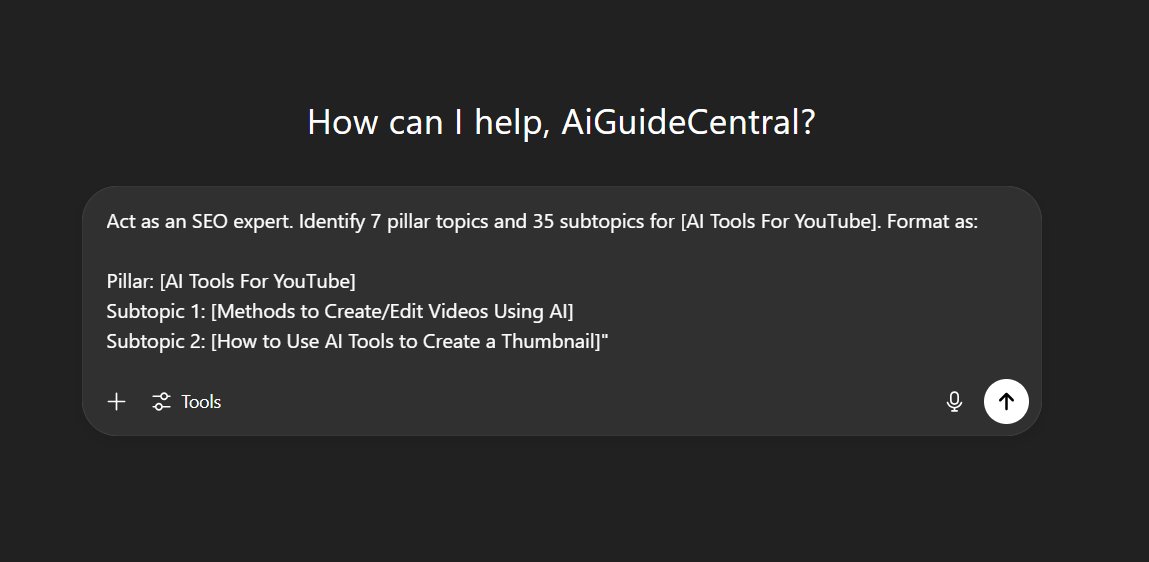
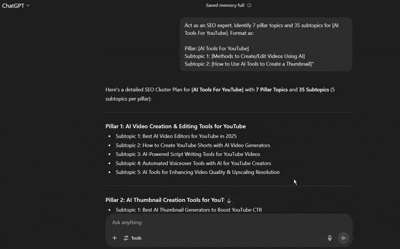
Learning and understanding this is the basic of AI content clustering strategy.
Step 2: Semantic Content Interlinking (Schema Markup: HowTo & FAQPage)
After creating your cluster map, you can connect these elements with:
- Contextual internal links.
- Semantic anchor texts.
- LSI keyword variations.
Prompt Example: “Analyze this pillar topic ([Topic]) and its subtopics. Generate:
- Internal linking strategy
- LSI keywords for each piece
- FAQ schema questions”
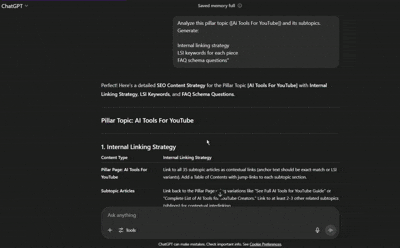
Step 3: AI-Assisted Content Upgrades (EEAT-Focused)
To make your content HCU-proof (Helpful Content Update):
- Add expert quotes.
- Insert case studies with data.
- Provide step-by-step visuals (diagrams, infographics).
Case Study (Schema Markup: CaseStudy)
A SaaS company implemented the ChatGPT SEO cluster expansion strategy and saw:
| Metric | Before | After |
|---|---|---|
| Keywords Ranked | 142 | 1,892 |
| Monthly Organic Traffic | 8,200 | 34,700 |
| Featured Snippets | 3 | 41 |
Strategy Used:
- Built 12 pillar pages.
- Expanded into 286 subtopic articles.
- Interlinked with semantic anchors.
This approach led to a 317% increase in traffic within 4 months.
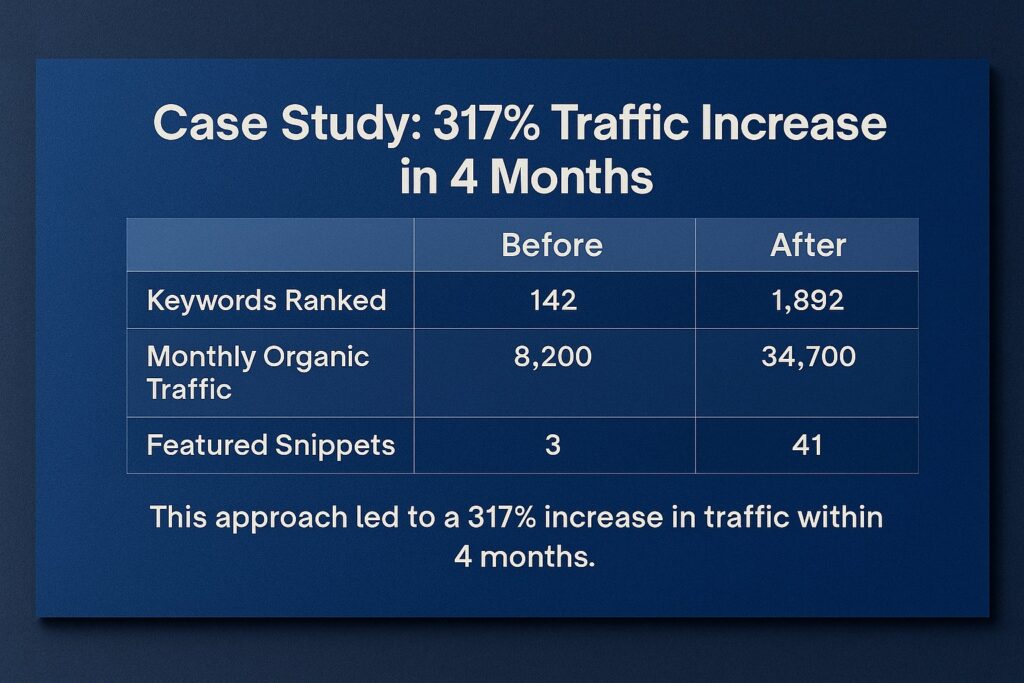
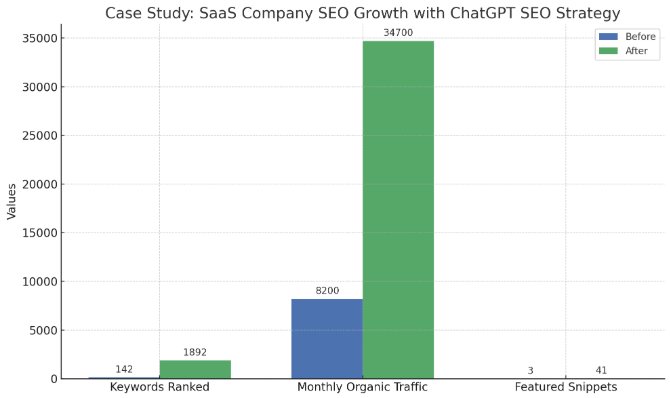
Google SGE Optimization: How to Future-Proof Rankings
In a world where Google’s Search Generative Experience (SGE) goes global and AI trends changing regularly, you have to follow the same clustering logic as AI. Here’s how to prepare:
SERP Reverse Engineering: Prompt: “Analyze the top 5 results for [Keyword]. List their H2/H3 structure, word count, and missing content gaps.”
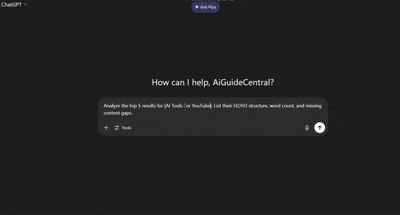
Google SGE Baiting: Prompt: “Generate 5 ‘People Also Ask’ questions for [Topic] with 50-word snippet-optimized answers.”
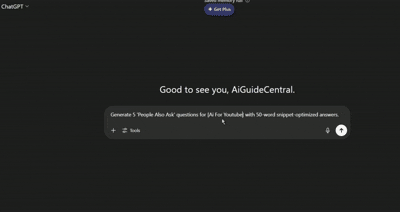
EEAT Amplification: Always ensure:
- Original research.
- Personal anecdotes.
- Factual accuracy.
Critical Mistakes to Avoid in ChatGPT SEO
- Publishing unedited AI content.
- Ignoring EEAT signals.
- Keyword cannibalization.
- Skipping Schema Markups (FAQPage, HowTo, CaseStudy).
| Note: I have taken references for this article from a YouTube video about GEO. So if you want to see the entire process visually and in more detail, you can watch that video. |
Advanced ChatGPT SEO Hacks
1. Voice Search Optimization
Prompt: “Convert the keyword ‘AI Tools For Youtube’ into 5 natural-language voice queries.”
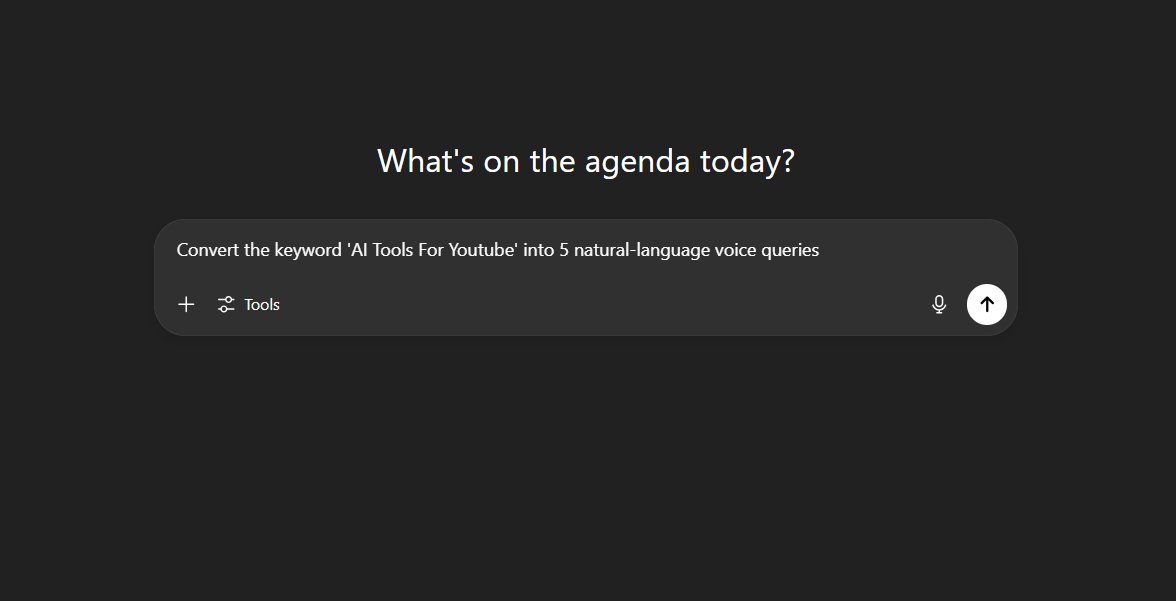
2. Agent-Based Listicle Prospecting
Use ChatGPT’s Agent mode to:
- Identify listicles where your brand isn’t mentioned.
- Extract the editor’s contact details.
- Prioritize high-authority domains based on Ahrefs Rank or Majestic Million.
GEO Checklist for AI Content Clustering Strategy
- Optimize product pages for relevance (1000 words).
- Create singular keyword pages & listicles.
- Use AI to automate deep research.
- Ensure internal linking across clusters.
- Target high-authority listicles for inclusion.
- Track citations using Ahrefs’ AI overview feature.
- Leverage Agents for scaled prospecting and outreach.
Note: If you learn and implement the things discussed in this guide, you can easily start earning by just side hustling using AI.
FAQs
No, as long as it’s built for EEAT (Experience, Expertise, Authority, and Trustworthiness). The March 2024 update is looking to get rid of thin, low-quality AI content.
A minimum of 30% of the content should be sourced from human insights, case studies, and original data to provide quality and avoid HCU penalties.
Yes. Use location-specific prompts: “Generate 10 locally-focused subtopics for [Business] in [City]”
With the Google Search Console and all of GA4’s AI content filters, as you monitor Ahrefs’ citations in their AI report, you can try to identify the influences on LLMs.
GPT5 is great for long-form clusters, and Claude 3 is good for accuracy checking.
Conclusion: The Future of SEO Lies in AI-Driven Content Ecosystems
The era of chasing Google SERPs is dead. And AI-Generated SEOs Are The New Field of Battle. Optimized through the ChatGPT SEO stacks of AI content clustering, Google SGEs, and listicle with an edge, you will keep your brand alive and powerful.
Relevance is not only in the keywords but also inherent to what creates depth in a topic, authoritative citations and content structure.
Use AI to do the boring tasks, but always check and improve it yourself to keep it high-quality and real. So, that’s it for now. For more info, comment below.
Moreover, if you are a computer science or IT student and thinking that whether AI is going to replace the programmers in future or not, then you must read out latest article on that.

